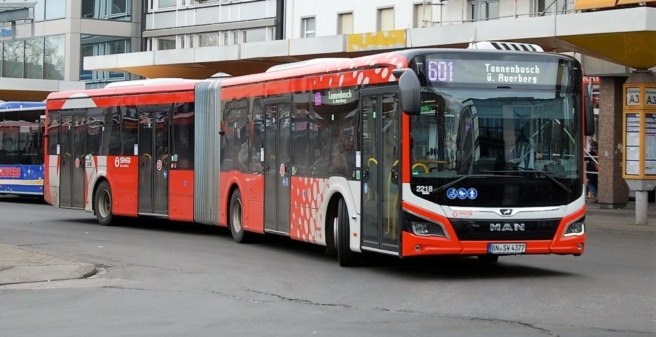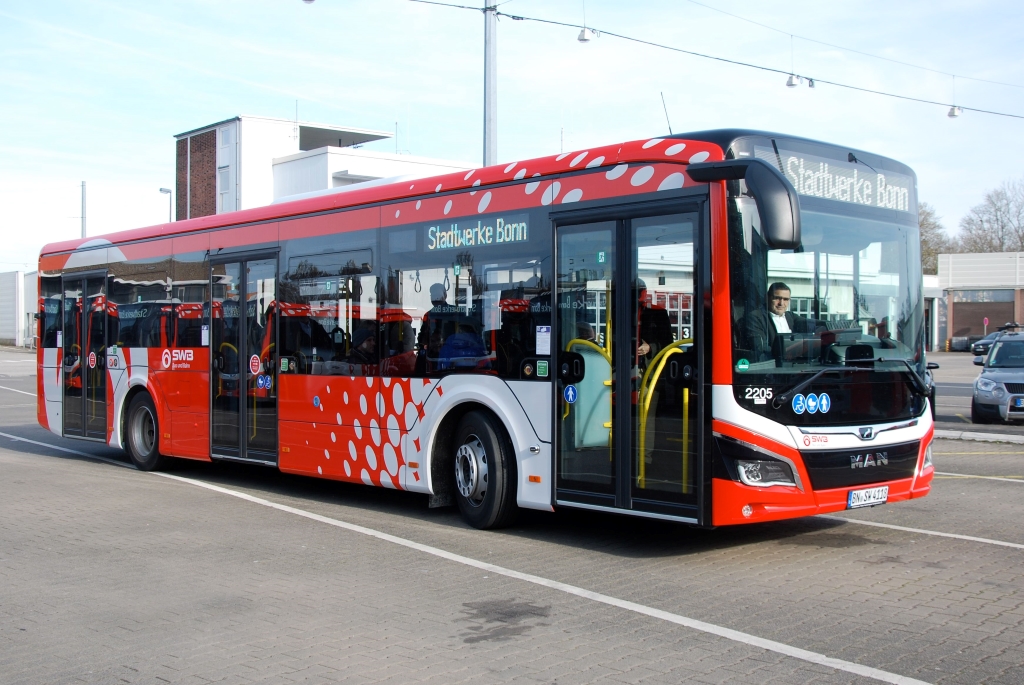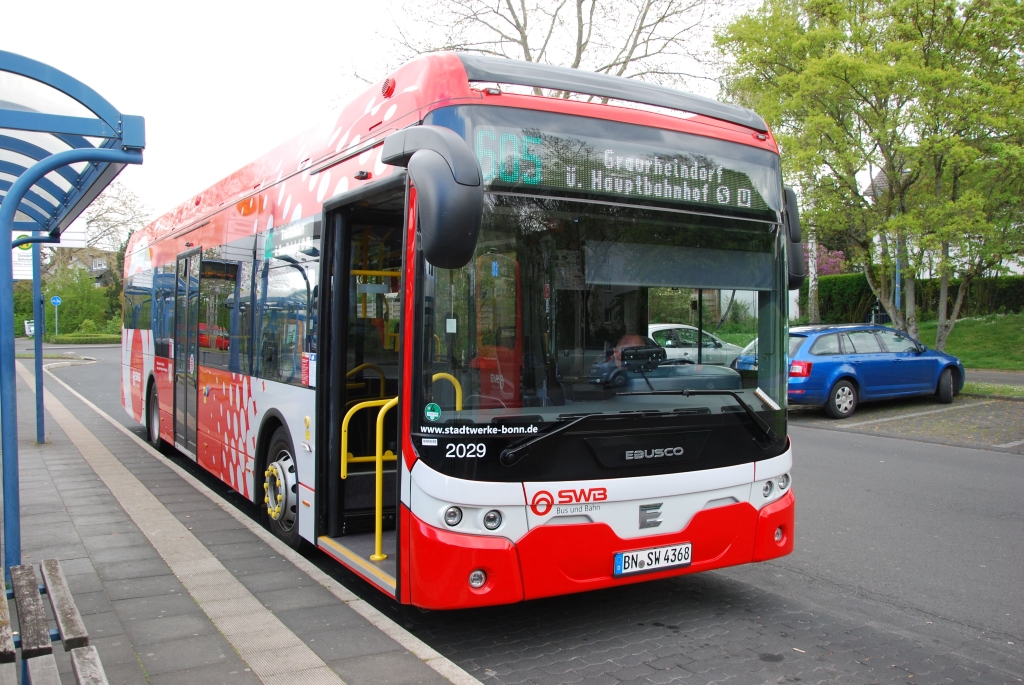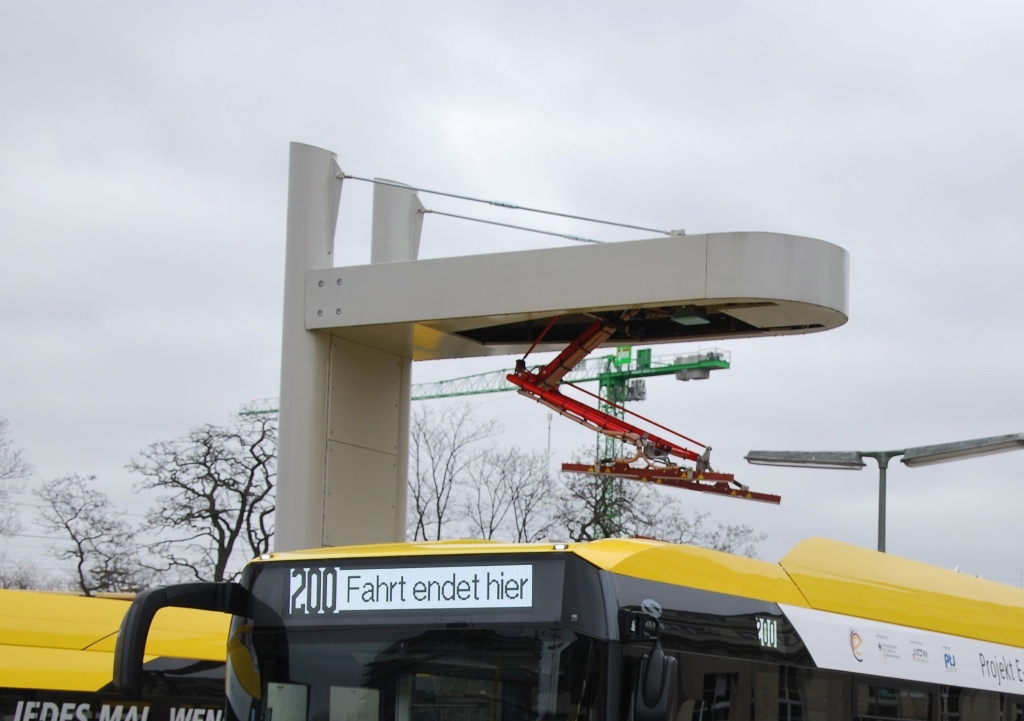
On 16 March 2023, the Stadtwerke Bonn (SWB) presented its 30 new buses. These are 15 solo (2-axle) buses of the MAN Lion’s City 12 efficient hybrid model (buses 2201 to 2215) each with a length of 12,200 mm and also 15 articulated buses of the MAN Lion’s City 18 efficient hybrid model (buses 2216 to 2230) with a length of 18,100 mm. The solo buses have three doors and the articulated ones four. This is new for Bonn. The first of the new buses arrived in Bonn in January, the last four are scheduled to enter service in March.
The engines of the new buses are located at the rear left – opposite the last door – in an “engine cabinet”, the radiator is installed above them. The engines of the solo buses produce 206 kW (280 hp), those of the articulated buses 243 kW (330 hp). The engines comply with the currently strictest Euro 6 D emission standard. Thanks to the “Efficient Hybrid System”, the buses save up to 26 tonnes of CO2 per year and consume up to 30% less fuel. The cars have an automatic start-stop system: when the bus comes to a stop at a bus stop or in front of traffic lights, the engine switches off automatically. As soon as the driver presses the accelerator pedal again, the engine starts up automatically. When braking, electrical energy is generated through recuperation, which is used to charge ultracaps (resistors) in a “hybrid module” on the roof. As long as the engine is at a standstill, the bus’s electrical system is supplied from this storage, and the next time the bus starts up, the energy from the hybrid module supports the diesel engine, so that the start-up process costs less diesel oil.

From 7 July 2024, a turn-off assistant will be mandatory for all new buses. This is intended to prevent cyclists, pedestrians and other road users who are in the blind spot next to the bus from being overlooked and thus coming to harm. Bonn’s new buses already have this turning assistant.
It is noteworthy that the new series 2022 will be Bonn’s last diesel buses. From now on, all of Bonn’s buses are to be electrically powered. A first corresponding tender for ten battery-electric solo buses (length 12 metres), to be delivered in autumn 2024, is now going to start shortly. Currently, the expression of interest procedure is underway, in which manufacturers of such vehicles can declare that they would like to deliver. The official invitation to tender will follow, and the award is scheduled for autumn of this year.

The tender contains remarkable innovations for Bonn. SWB already has seven battery-powered electric buses, four 12-metre-long “Ebusco 2.2” (numbered 2029 to 2032) and three 18-metre-long articulated Solaris Urbino 18 electric (cars 2033 to 2035), which are only recharged overnight at the depot (over-night-charger). All seven of them do what they are supposed to do day after day, but because they are not recharged during operation on the line, their (as yet) not unlimited range has to be taken into account when planning their operation. Although they leave the depot in the morning like all their diesel counterparts, they are only allowed on routes that return to the depot around 7 or 8 pm. Until then, however, their range is completely sufficient: the horror scenario that is occasionally painted on the wall, that electric buses would come to a standstill with an empty battery or that the buses would have to be constantly exchanged for cars with a freshly charged battery, simply never happens. The capacity of the batteries is always sufficient for the morning to early evening.
However, if you want to convert the entire fleet to battery buses, you also need vehicles that can run 24 hours a day. Battery technology is making enormous progress, “solid-state accumulators” are being developed and research is being done on batteries with different cell chemistry in order to achieve higher storage capacity. They are also quite successful, but they have not yet reached the point where the accumulators would have the necessary capacity for buses to operate 24 hours a day. Even though this is undoubtedly only a question of time.
The SWB are therefore breaking new ground. For the first time in Bonn, the buses that are now being tendered are to be recharged on the line. Charging masts are to be erected in the network, at which the buses with “inverted” pantographs will be supplied with electricity. The bus drives under the charging station, the pantograph lowers from the station onto the bus, and the electrical contact between pantograph and bus is established via charging rails on the roof of the bus. This system of recharging is less common, but is used with good success in Hamburg and Berlin, for example.

Whoever will to supply the new electric buses for Bonn will also provide the charging infrastructure, i.e. charging masts and power supply. SWB attaches great importance to the fact that the charging infrastructure can easily be moved from one location to another.
It will be interesting to see who will participate in the tender and, above all, who will be awarded the contract.
25.03.2023
